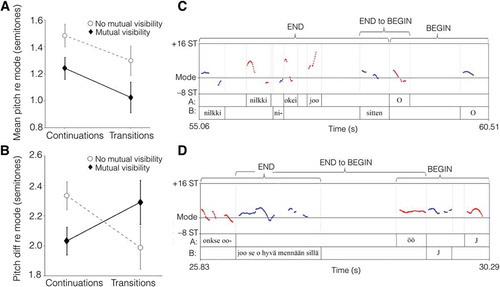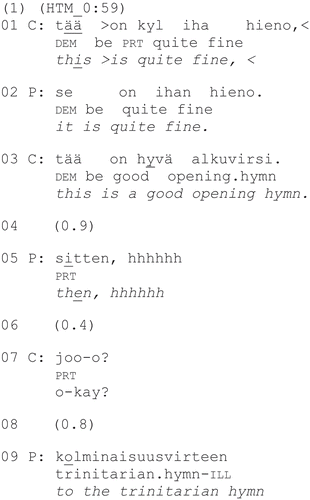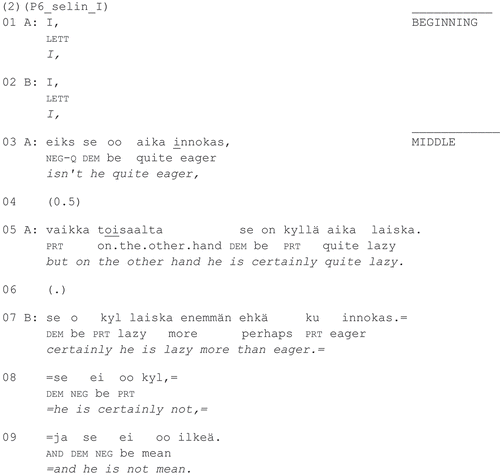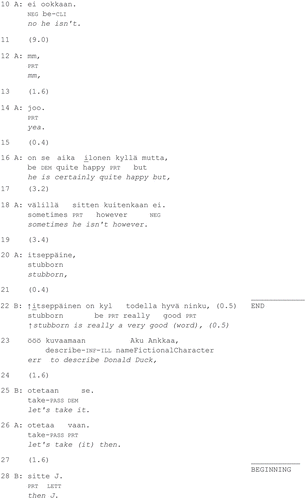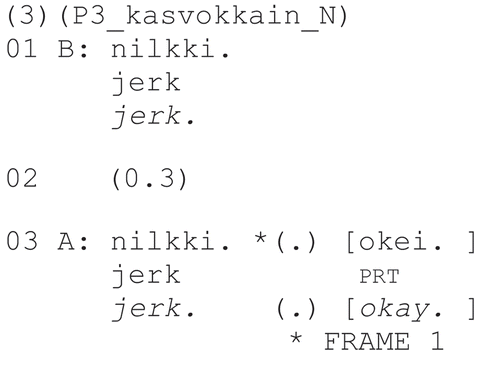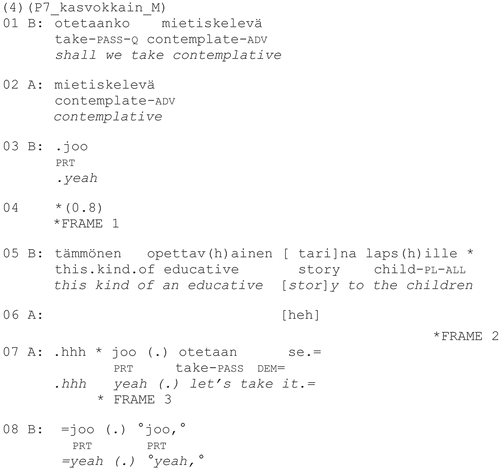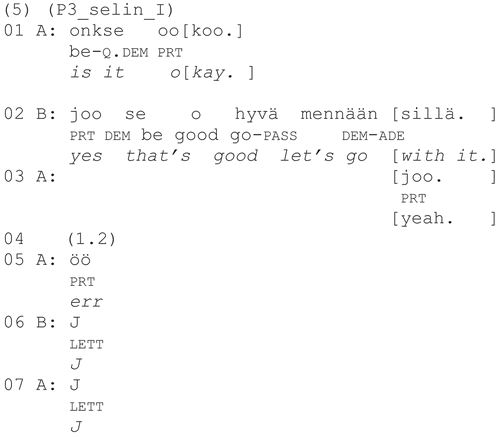Figures & data
Figure 1. A: The two conditions of the experiment. B: Body-joint marker locations (black marker is the chest point that was used to calculate the body sway). C: Histogram of mean correlation coefficients of participants’ body sways. D: Body sway synchrony: Interaction of visibility and sequence phase. The error bars indicate the standard error of the mean.
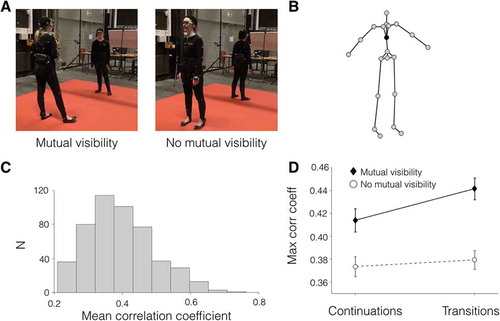
Figure 2. A: Frames for Extract 3. Participant A on the left. B: Cross-correlogram for a 30-second timespan (from 45 to 75 seconds) containing Extract 3. Vertical lines show the boundaries between sequential phases, and in the graph, bright colors show time points and lags with high correlation between participants’ body sways.
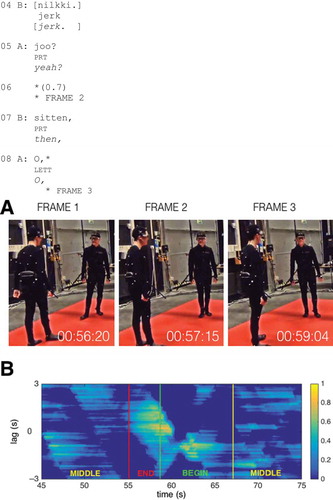
Figure 3. A: Frames for Extract 4. Participant A on the left. B: Cross-correlogram for the 60-second timespan containing Extract 4.
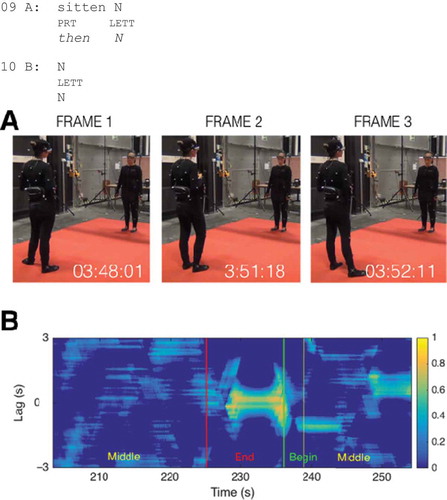
Table 1. Results of the Two-Way ANOVA’s for Mean Body Sway Correlation, Individual Speakers’ Pitch Register Use, and Their Turn-By-Turn Pitch Register Matching, With Factors Visibility (Mutual Visibility, No Mutual Visibility), and Sequential Phase (Sequential Transition, Sequential Continuation).
Figure 4. A: The participants’ use of pitch register in the two visibility conditions (mutual visibility, no mutual visibility) and the two different sequential contexts (sequential transitions, sequential continuations) of our study. B: The degree of difference/similarity in the participants’ use of pitch register in the aforementioned conditions. In A and B, the error bars represent standard error of the mean. C: Pitch contours of the two speakers’ utterances in Extract 3. C: Pitch contours of the two speakers’ utterances in Extract 4.
